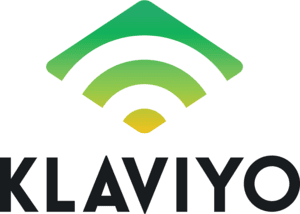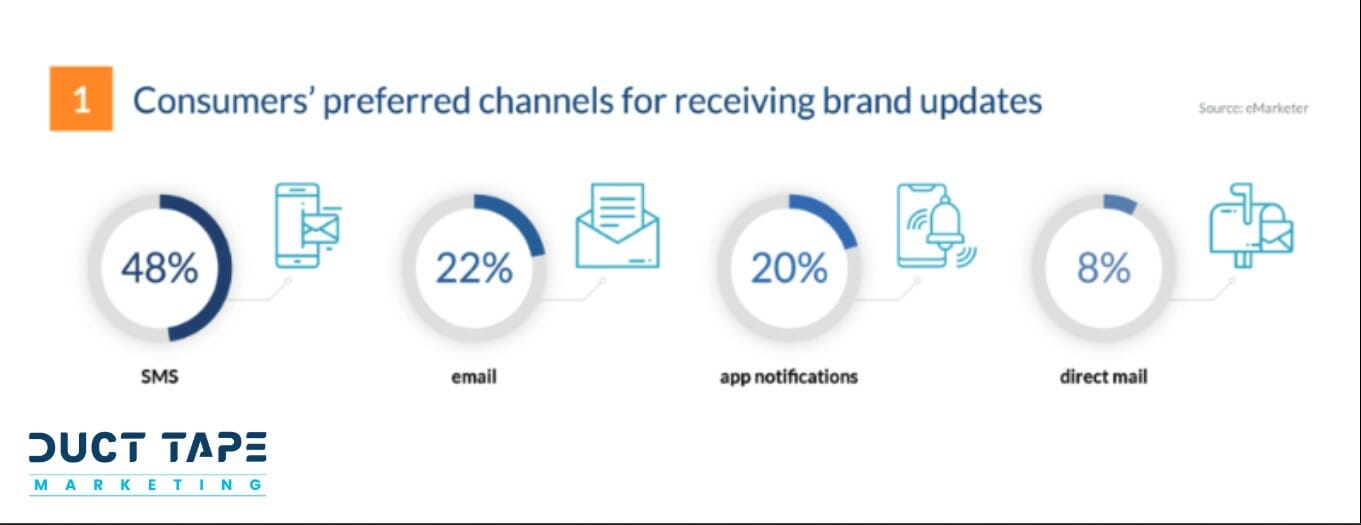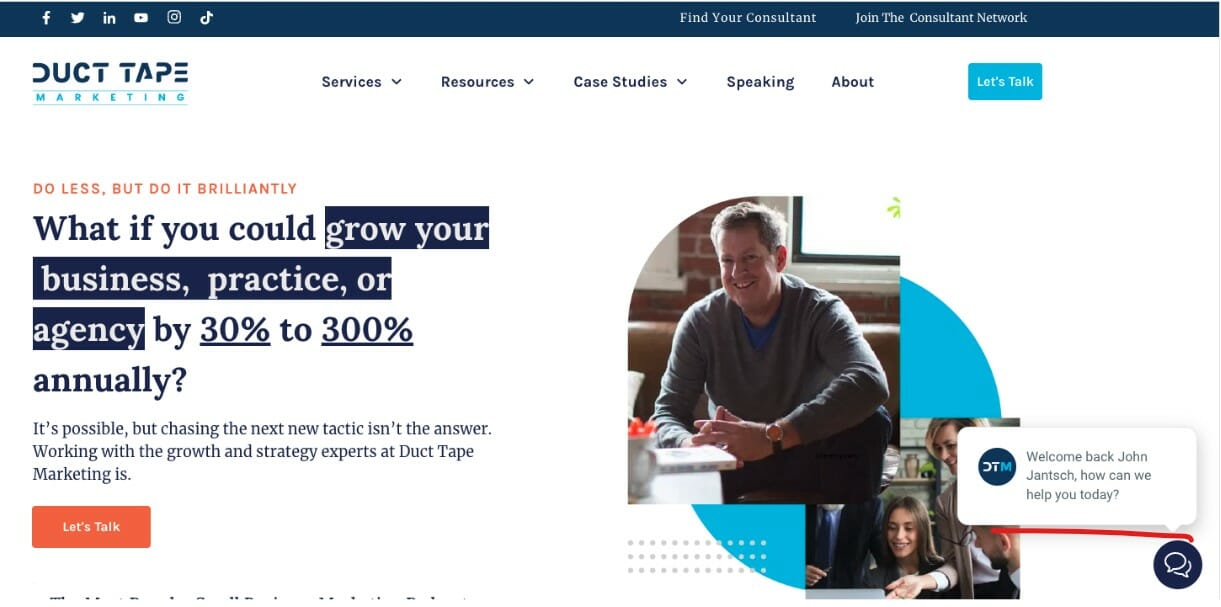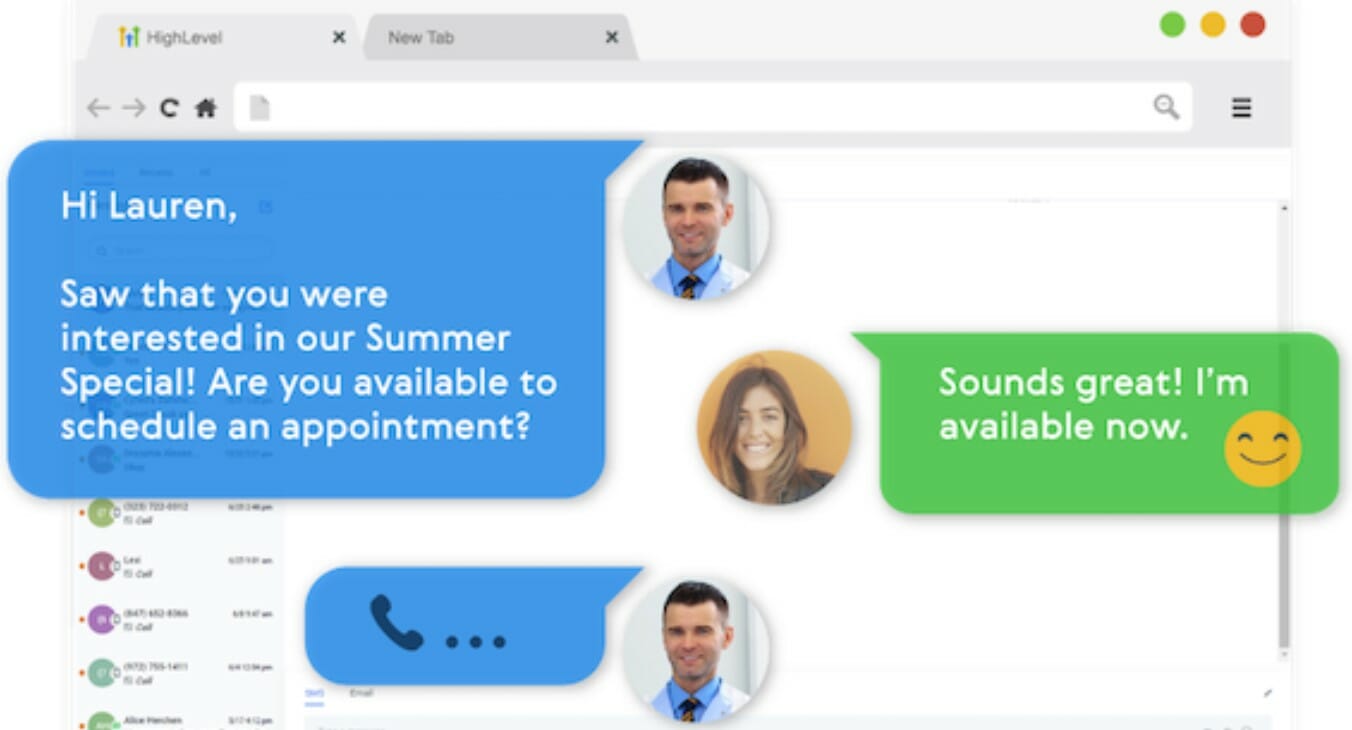Becoming Your Best Virtual You written by John Jantsch read more at Duct Tape Marketing
Marketing Podcast with John Jantsch on Becoming Your Best Virtual You
Virtual and work from home is getting a lot of hype right now, for obvious reasons. I’ve been a big fan of virtual work for many years, and there are some tools I’ve come to love and rely on over the years. I’m going to talk about some of those tools that I think a lot of people have either underutilized or are coming to a new appreciation for right now.
Some of these tools you might begin to use out of necessity right now, but as you get to know them, you might discover that you enjoy them so much you’ll continue to rely on them once we’ve returned to business as usual.
I’m going to run down my list of go-to tools, give you some case studies, and share how I personally use those tools in my daily life as an entrepreneur.
1. One-to-One Video
A lot of people are relying on one-to-one video at present because we can’t meet in person, but one-to-one video is a great communication tool even when we do have flexibility with how we meet up and converse with others.
By one-to-one video, I mean a video that you record specifically for one individual. The greeting and message is personalized just for them. And I’ve found over the years that this technology has many applications, from sending internal messages to remote folks on my team to interacting with clients and prospects.
The first way I use one-to-one video is to provide clarification when I’m sending a message. Say I’m forwarding on a long document with lots of detailed information. I might send along a one-to-one video highlighting the most salient parts of the document to help direct the reader.
I also find it’s a helpful tool when you’re working with a distributed team. For example, I work with a lot of web designers, and it’s quick and easy to record a video that shows minor edits that I’d like to see on a webpage they’ve already mocked up.
It’s also great for documenting processes. Using the screen capture tool allows you to walk someone through a process, if you’d like to give them a guided step-by-step walkthrough of what needs to be done in a given program.
It’s also a creative way to interact with clients or prospects. Instead of just sending a standard introductory email, which doesn’t stand out well or capture attention, use a personalized video to catch someone’s eye in an otherwise crowded inbox. It’s also a great way to send a thank you or to ask for a review from a happy customer.
The Tool: Loom
My go-to for one-to-one video is Loom. Even the free version of the platform has tons of functionality. You can film yourself, do a screen capture video, or create a video that shares your screen and shows you down in the corner.
Loom also makes the sharing process seamless. As soon as you’re done recording your message, you hit stop, it produces a link, and you drop that URL into an email. If you’ve integrated Loom with Gmail, it will embed the video directly into your email.
When someone gets the email, Gmail users don’t even need to leave their inbox; the video plays right within their inbox.
2. Video Meeting & Webinar Platform
When you’re working with a distributed team, it helps to have a way for you all to come together face-to-face. That’s where video meeting platforms come in. We use them for internal meetings, to talk with clients (to present ideas, brainstorm, or offer updates); we even use it for one-to-one sales calls.
Video is also a great tool for creating educational content and webinars. And some podcasters have started using video in their recording process. While they’ll only use the audio stream to produce the podcast, it’s helpful for them to be able to see their guest on the screen and makes the interview more natural and seamless.
The Tool: Zoom
The video meeting and webinar platform I’ve come to rely on is Zoom. What I love about Zoom is that there’s no software involved. No one needs to download anything to access the meeting; you simply forward a link and anyone can join from any device.
Zoom can be used for both webinars and meetings. The tool allows you to do a presentation (like a webinar) where everyone is an attendee and is muted. There’s a screen-sharing functionality, and you can incorporate features like chat, Q&A, and polls into your presentation.
Alternatively, you can use Zoom for meetings. Here, your team hops on the video and you can sit around and talk in much the same way you would if you were all around a conference table.
Of course, the one thing everyone must have to participate in a Zoom meeting is a way to connect. But it’s possible to do so via computer or phone. There’s an app for mobile devices, and people can even call in through a dial-in number, if that’s easier.
3. Live Streaming
Live streaming is becoming increasingly popular. And particularly during the current moment, where we’re not able to meet up in person, we’re seeing more personalities hopping onto Facebook, YouTube or LinkedIn to connect with their audience.
I think live streaming is an incredible tool for building community and speaking to your fans, but I find it’s often over-utilized. I think the key to creating great live streaming content is to start by asking yourself “What is useful for my community, prospects, or clients at this time?” That’s the question that should be driving you as you devise your live programming.
All of the major social platforms allow you to go live from within their individual apps, but I prefer to use an external tool.
My go-to for live streaming online has become StreamYard. I find the tool helpful for a number of reasons. First, it allows you to broadcast to multiple platforms simultaneously. Rather than having to decide between addressing your fans on Facebook or LinkedIn, with StreamYard, you can do both at the same time.
It also allows you to add branding onto your video. You can put your logo or any relevant promotional information in the bottom third of your video screen. You can also easily incorporate Q&A and chat into your video, making it easy to engage your audience while you’re live.
It’s also really easy to record and hang onto your sessions. While it’s possible to download things that go live on other social media platforms, they don’t make it simple for you to capture that content. StreamYard makes it seamless, and then you have access to the content for future use, should you decide you’d like to reuse it.
Finally, StreamYard allows you to schedule out the time when you’ll go live and includes a notification on Facebook, YouTube, LinkedIn, or your streaming platform of choice. By notifying your audience of when you’re going live in advance, you create a built-in audience for your content and ensure that you’ll have people there to engage with—it helps you to create more of a live webinar experience.
4. Collaboration Software
For many folks who are used to sharing office space with their colleagues, the biggest hurdle to remote work is keeping everyone on the same page when it comes to advancing your projects and agendas. You need a unified communication tool and work space so that you can bring together all the emails, files, revisions, and to-do lists in one place. That way, everyone is always on the same page, and you always know right where to go to look for information.
There are tons of great collaboration suites out there, from Basecamp to Asana to Microsoft Teams.
Our team loves Slack for collaboration and communication. When you’re used to working in an office, you can just pop down the hallway to ask your colleague a quick question. When you’re working from home, Slack is the next best thing.
It not only allows you to keep up a friendly and more relaxed chat environment, it also helps you to keep communications unified and to make sure all relevant parties hear announcements and are kept up-to-date on the latest company news. Rather than having to call around to each person individually, you can notify the appropriate Slack channel, and everyone who needs to receive your message gets it right away.
Is Virtual Me Here to Stay?
A lot of these tools have become necessities right now because of the coronavirus pandemic. People are using the tools in new ways. Some are conducting networking groups online rather than in person. Others have even set up co-working video sessions, where folks log on, go on mute, work individually, and occasionally come up for air to say a few casual words to each other.
We’re even seeing families adopt the technology for fun ways to stay connected virtually. I’ve seen scavenger hunts, science experiments, play dates, book clubs, and dance parties all occur on the web in these last few weeks of social distancing.
While some of these virtual ways of being will likely go away when life returns to normal (a virtual family game night will never replace the in-person hugs and warmth you’ll feel), I suspect some of these new ways of working will stick around.
For example, I host a number of weekend bootcamps throughout the year with our Consultant Network, and we’re planning to move them to virtual events. While there are some things you may lose in a virtual setting (the spontaneous conversation over lunch, say), in terms of cost and ability to include more people, virtual has got in-person beat every time.
Tips for a Better Experience
When it comes to connecting virtually, there are a few steps we can all take to make it a better experience for ourselves, our clients, our families, and anyone else we may be conversing with online.
First, audio is a big deal. There’s nothing more frustrating than listening to fuzzy audio that keeps going in and out. Particularly if you’re presenting to a group, it pays to invest in a nicer, USB condenser mic (like the Blue Yeti). These microphones pick up more depth and character in your voice, and they make you sound a lot more professional than the mic on your iPhone headphones.
Video matters, too. Rather than relying on the built-in camera that comes on your laptop, spend a little bit more on something like the Logitech C922 Pro. A nicer camera will give you higher video quality, with better light and clearer visuals.
Speaking of light, make sure that you have natural light on your face, if you can. Don’t have the light streaming in behind you, though, or you become a silhouette. If you don’t have natural light wherever you’re recording from, investing in a ring light can help your video look less dark and grainy.
Finally, do what you can to eliminate distractions. I know it can be difficult when you’re working from home and might have kids or pets running around in the background, but anything you can do to make your background as clean and seamless as possible is a major bonus for video calls and presentations.
I love the company Anyvoo; they create easily portable backdrops for video calls. You can get whatever you’d like printed on the canvas—your logo, a peaceful mountain scene—and you simply set the background up behind you whenever you have to take a video call. It’s on a stand, so it can be assembled anywhere and is taken down just as easily.
Many of us are adjusting to a new way of working that became a reality very suddenly over the past few weeks. I hope these tools make the transition a little easier for you, and that some of them become favorites that will continue to help you grow your business even after we return to normal life.
Like this show? Click on over and give us a review on iTunes, please!

This episode of the Duct Tape Marketing Podcast is brought to you by Klaviyo. If you’re looking to grow your business there is only one way: by building real, quality customer relationships. That’s where Klaviyo comes in.
Klaviyo helps you build meaningful relationships by listening and understanding cues from your customers, allowing you to easily turn that information into valuable marketing messages.
What’s their secret? Tune into Klaviyo’s Beyond Black Friday docu-series to find out and unlock marketing strategies you can use to keep momentum going year-round. Just head on over to klaviyo.com/beyondbf.







 This blog post is brought to you by
This blog post is brought to you by 



